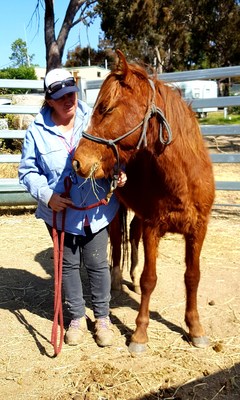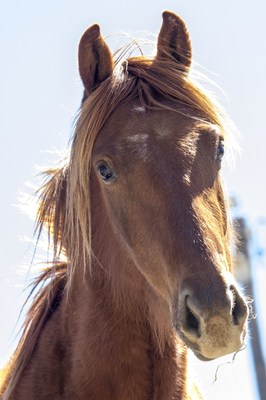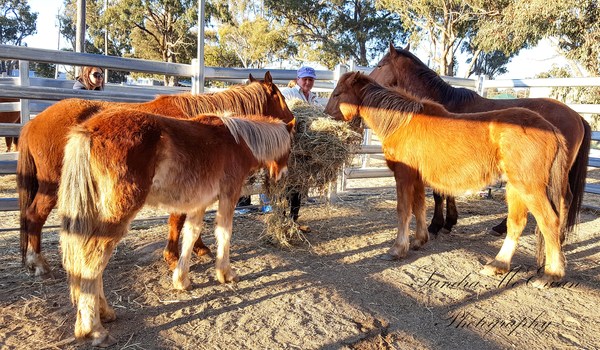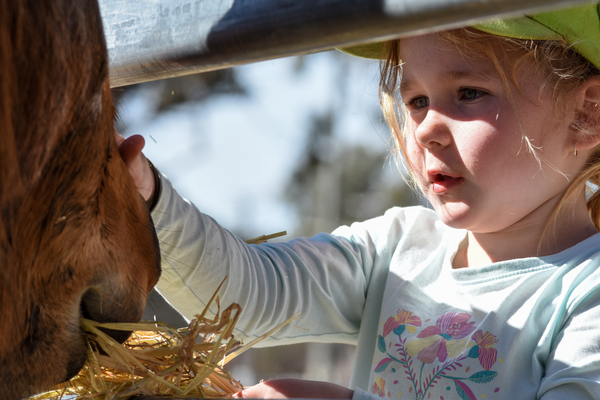Story – Jeremy Sollars, Photos – Sandra McEwan
They’ve been called an ‘Australian icon’ and the New South Wales Government is set to officially recognise the historical significance of the Snowy Mountains brumby.
As reported last week in the Free Times a group of 15 brumbies from Kosciusko National Park – rescued ahead of a planned government cull – arrived in Stanthorpe last Monday 28 August.
Since then almost all of them have been allocated to new homes but there’s still a number looking for a caring and committed new owner while they’re looked after at the Stanthorpe Showgrounds.
Brumby enthusiasts Sandy Robertson and Leisa Gillham are the women behind bringing these brumbies the Granite Belt and like those vehemently opposed to the brumby cull they’re passionate about Australia’s wild alpine horses.
The New South Wales Government appears to be weakening on its original plan to aggressively cull the Kosciusko National Park brumbies and reduce numbers from 6000 to around 600 over the next two decades.
The government originally said it was acting on the advice of ecologists and other scientific experts that the brumbies are damaging rare flora in the National Park.
But a huge outcry from brumby supporters led NSW deputy premier and Nationals leader John Barilaro to last month appear to back down on the cull, after fielding media questions over the expected timeframe.
The cull expected to start by the end of this year with a range of what the NSW Government described as “humane control methods” including trapping, mustering, fertility control and ground shooting – and trapped and mustered brumbies would more than likely have finished up in a meatworks.
But Mr Barilaro appears to have effectively shelved the cull – for now – and instead will seek to introduce legislation recognising the “cultural significance” of the brumby.
Sandy Robertson told the Free Times this week it was pleasing to see people power being taken seriously by politicians.
Sandy – who has a brumby nursery at Hirstglen between Warwick and Toowoomba – and Leisa Gillham are involved with the South East Queensland Brumby Association and have been rescuing and re-homing the wild horses for some time as part of the group’s ‘High Country Rescue Program’.
The pair made the trip down south in the last week of August to pick up the brumby group, with Sandy obtaining her medium-rigid (MR) truck licence for that reason.
New South Wales National Parks allows the release of some of the brumbies it traps as part of its 2008 Wild Horse Management Plan which remains in place, but which has far more limited control measures than the proposed cull.
“They are just a national cultural icon,” Sandy said.
“We’ve brought this group here to the Granite Belt as the climate is quite similar to where they’ve come from.
“We’ve been feeding and handling them – they’ve been through a tough winter down there so at the moment we’re just giving them grassy hay, it’s all their systems can handle right now.
“But we’re going to start them on supplements like pony pellets – and I’ve been boiling barley so they get a bit of ‘porridge’ on their hay.”
The group of brumbies includes stallions – which will be gelded prior to re-homing – and mares of all ages, from weanlings and yearlings up to an eight to 10 year old.
Sandy gave her thanks to local volunteers from the Stanthorpe area who’ve donated come down to the showgrounds to help with feeding and cleaning – and businesses who’ve also come to the party with feed and drench and other necessary items like wheelbarrows, including Wilshire and Co and Jenco.
“They’ve all been awesome – we just can’t thank them enough,” Sandy said.
The cost for the brumbies all up is $1250, which includes gelding, transport, microchipping, vaccinations and other vet bills, and feed.
If you’re interested in re-homing one – or more – of the remaining brumbies call Sandy on 0415 277 145 or Leisa on 0409 721 456.
A few Brumby facts …
Wild brumbies in Queensland are found in large numbers in the Sunshine Coast hinterland but there’s also pockets in our region in range areas and also in the Inglewood area
The SEQ Brumby Association carries out ‘passive trapping’ including the use of lick blocks after detailed visual observation of brumby ‘mobs’ to ensure foals are not left behind
Brumbies are the descendants of escaped or lost horses, dating back in some cases to those belonging to the early European settlers in Australia, including the ‘Capers’ from South Africa, Timor Ponies from Indonesia, British pony and draught horse breeds, and a significant number of Thoroughbreds and Arabians.
The origin of the term ‘brumby’ is hotly disputed – some believe it derives from horses left behind on his Mulgrave, NSW, property by a Sergeant James Brumby, or from an Aboriginal word ‘baroomby’ meaning “wild“ in the language of the Pitjara Indigenous Australians on the Warrego and Nogoa Rivers in southern Queensland, or possibly even the Irish word ‘bromach’ or ‘bromagh’, meaning ‘young animal’.










